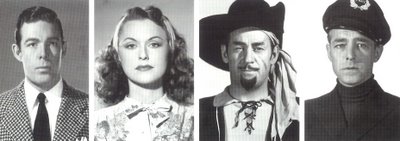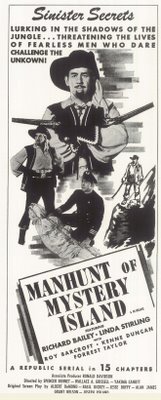

Somebody Had To See Them First

It must have been around 1968 when an old friend of my parents sat with us on the screen porch and reminisced about his childhood at the movies. Douglas Fairbanks had been a particular idol for him. Fairbanks as in Senior. Just another boy in the twenties going to see Robin Hood, The Thief Of Bagdad, and The Black Pirate when they were filling silent houses and thrilling that generation of action-adventure fans. Here was someone who’d experienced first-hand a figure I’d known only from the tabloid pages of my Blackhawk Bulletins, where you could still order Fairbanks movies in 8 and 16mm. Our visitor seemed impossibly old to me, yet I realize he was then the same age I am now, and whatever’s left of his peer group would today be in their nineties at least. For all the web addresses that celebrate Star Wars, monster movies, and Superman on TV, how many are posting their recollections of earlier days --- cowboys and serials at the Bijou, Fairbanks and Pearl White and Tom Mix? My age group was exposed to Gene Autry and Captain Marvel on television, but most of us missed the boat for these in the theatres. Those who lived the Golden Era recorded their memories in fanzines and books like Days Of Thrills and Adventure and Those Enduring Matinee Idols, but even these publications date back thirty plus years now. The hardiest life-long fans still turn up at Charlotte and Memphis conventions to recapture moments from sixty (seventy?) years ago. To attend each summer is to see their numbers dwindling. Celebrity guests who once counted Charles Starrett, Bob Steele, and Yakima Canutt among their number are now limited to ersatz refugees of TV westerns themselves dating four to five decades back. Attendance is down at these shows. Fans who observed an enfeebled Starrett and Yak headed toward the last round-up back in the eighties are themselves confronting the same frailties. Soon they’ll have gone the way of the Fairbanks generation. I saw an interview where Forrest J. Ackerman and Ray Bradbury talked about seeing Lon Chaney’s Phantom Of The Opera when it was new. Ackerman just turned ninety. For all our restorations and digital excavations, we can never appreciate what these people experienced. There’s just no substitute for being first in line at that ticket window.


Alan Barbour was thirty-seven when he wrote The Days Of Thrills and Adventure in 1970. Already steeped in nostalgia for a boyhood spent watching serials and westerns, Barbour’s generation wept for the loss of Buck Jones (who perished in the Cocoanut Grove fire of 1942) in much the same way his successors would mourn George Reeves in 1959. Barbour’s elder Ray Bradbury once described the trauma of Lon Chaney’s death in 1930. I can remember precisely where we were standing when a cousin informed me of Boris Karloff’s passing in 1969. There’s no need my mentioning that most of these names mean nothing to young people today. Is it my own sense of mortality that whispers of a day when all us boomer fans will go the way of those who first thrilled to The Manhunt Of Mystery Island? Watching this crackerjack Republic serial over the last three weeks made me long to have been among kids queued up in 1945 for its first-run. In my small town, boys actually rode ponies to the Liberty to see it. Now I’d like to think I enjoyed a reasonably bucolic movie-going childhood, but I certainly don’t recall a hitching post outside the theatre when Hercules In The Haunted World played. Alan Barbour spoke of kids donning homemade Spy Smasher capes and re-staging events of each chapter as they waited for the next. Now how do you get those sensations watching a bootlegged DVD in 2006? I can never have anything but the faintest idea of what it was really like to spend those Saturday afternoons with Captain Mephisto. Serials were so proactive with their audiences as to be like live performances. I don’t think there’s any nostalgia so intense as that felt by kids who came up during the serial’s Golden Age. One of the things I’ve enjoyed most about watching these old chapter-plays is the sense of continuity I get with each trip downstairs to start a show. The feature may disappoint, but that next chapter of Manhunt On Mystery Island will never let me down. It’s precisely that formula --- rigid, unyielding --- that relaxes and reassures, even amidst the bedlam of leaping stuntmen and smashed furniture. If rock concerts had 1945 equivalents, it must surely have been those raucous Saturdays when serials like this bowed before their initial audiences.




In brief, Manhunt Of Mystery Island tells of a reincarnated pirate who attempts to secure world domination by means of a power transmitter that will harness radium and distribute energy-like impulses to provide unlimited power for worldwide shipping and aviation. A simple concept we can all understand, right? Well, at least those of us who grew up to become astronauts or nuclear scientists could. I made "C’s" in ninth-grade Physical Science, and so remained hopelessly befuddled throughout all fifteen chapters, though I did at least comprehend Mephisto’s oft-stated intention to revolutionize the world’s industrial setup on my own terms and destroy those who oppose me. Considering what’s at stake, you’d think they’d send someone other than criminologist (are there such people?) Lance Reardon to quell the plot. Richard Bailey is Lance Reardon. He’s perhaps the most reviled of Republic serial heroes, though I found him refreshing and likeably wooden. These people really start to grow on you after five or so chapters. Bailey wears a resplendent plaid sport-jacket in every single scene he plays. Twice plunged into salt-water, he reemerges, like Roger Thornhill, neatly sponged and pressed. In terms of ongoing heroism, the coat itself runs a close second to Reardon’s own exertions, and indeed should have been awarded a separate card in each chapter’s credits. The highlight of any Republic serial is, of course, the fistfights, but here Lance is restricted to a mere handful of opponents (Mystery Island being a largely uninhabited atoll) and so must engage and vanquish the same heavies over and over again. Mastermind Mephisto isn’t above entering the fray occasionally, though fisticuffs are left primarily to first lieutenant Keene Duncan, his exhausting bouts with Reardon repeated ad nauseum throughout the serial, with neither man willing to submit or cry uncle. Mephisto is continually tactless and insensitive toward his minions. Even were he to achieve global dominion, it’s unlikely this man could maintain it for long. Ruling an immediate post-WWII community of nations, already beset with Cold War tensions and possible nuclear proliferation, would seem a nearly overwhelming task for any despot, let alone one predisposed to dress at all times in pirate garb.



My vocabulary was enhanced by virtue of these colorful chapter titles --- The Sable Shroud, Bridge To Eternity, The Cauldron Of Cremation. I was reminded of a reader request to the editors of that venerable early-60’s Warren publication, Screen Thrills Illustrated --- Could you please show a picture of a man being cremated? --- and sure enough, the one they used was Lance Reardon sprayed by a flame launcher in Manhunt Of Mystery Island. One can imagine threats issued by Republic serial fans during recess arguments --- If you don’t give me back my ball, I shall engulf you in a Cauldron of Cremation. The denouement in the final chapter reveals the hidden identity of Captain Mephisto. It seems that, with the help of a transformation machine he doggedly utilizes at least once in each installment, C.M. is able to assume the identity of one of four suspects. We close in on the secret by way of characters being killed off by increments, as is the wont of most serials featuring mystery villains. I wasn't able to distinguish these guys one from the other. Even watching a chapter a day, they all seemed alike. What’s more, the ending was so rushed, I never understood which one was actually Captain Mephisto. An added complication found Lance Reardon himself the object of a last minute transformation wherein he and Mephisto would exchange bodies. As far as I can tell, that may well have been Lance that Linda Sterling shot at the end of Chapter Fifteen, and Captain Mephisto, having assumed the physical countenance of Reardon, did indeed go on to assert his will on a worldwide basis, albeit in the more conventional guise of the now deceased criminologist. Could this be the only Republic serial where the villain does indeed prevail, and no one’s ever the wiser for it?
